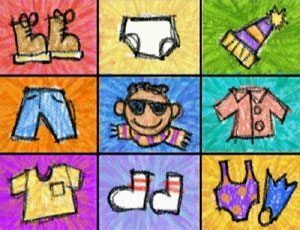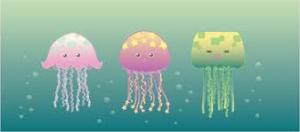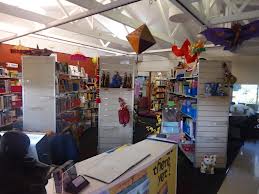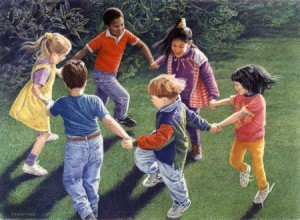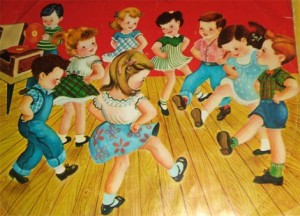We learn this song when we do the story of teddy not being able to find his clothes for pre-school! When the kids help him find them, we sing the Getting Dressed Song!
I wrote this one myself, as popular well known tunes work well! So don’t have any links for you…but just sing to the Adam’s Family Tune…
chuānshàng yīfu (clap clap) chuānshàng yīfu (clap clap)
穿上衣服 (拍 拍)穿上衣服 (拍 拍)
chuānshàng yīfu chuānshàng yīfu chuānshàng yīfu (clap clap)
穿上衣服 穿上衣服, 穿上衣服 (拍 拍)
wǒ chuānshàng wǒ de duǎnkù, wǒ chuānshàng wǒ de Chènshān
我穿上我的短裤, 我穿上我的衬衫
wǒ chuānshàng wǒ de wàzi, wǒ kànshàngqù hěn kù.
我穿上我的袜子, 我看上去很酷
wǒ chuānshàng wǒ de xiězì, wǒ daishàng wǒ de màozi
.我穿上我的鞋子, 我带上我的帽子。
wǒ chuānshàng wǒ de jiākè,wǒ kànshàngqù hěn kù.
我穿上我的夹克, 我看上去很酷
(repeat chorus)
Translation: Getting Dressed (clap clap), I put on my shorts, I put on my shirt, I put on my socks, I look very cool, I put on my shoes, I put on my hat, I put on my jacket, I look very cool. Adults can click fingers, children can clap, or they might like to just imitate you clicking fingers. Replace shorts with skirt using qúnzi 裙子 if you want to.
